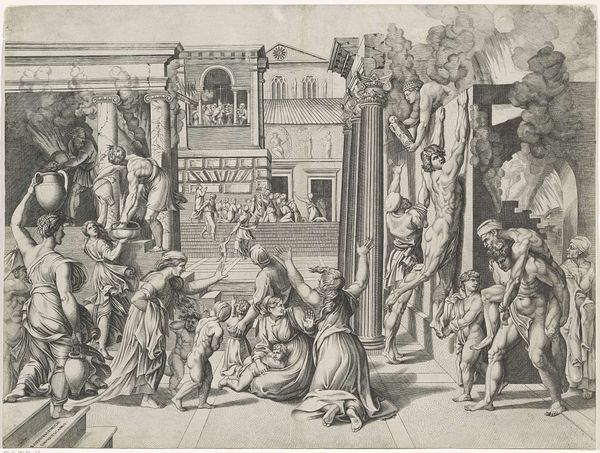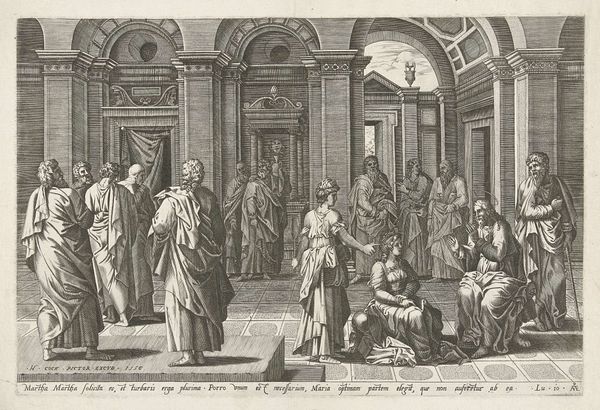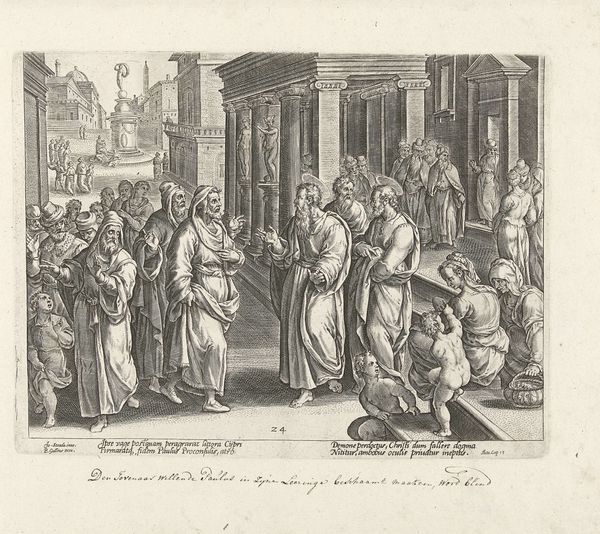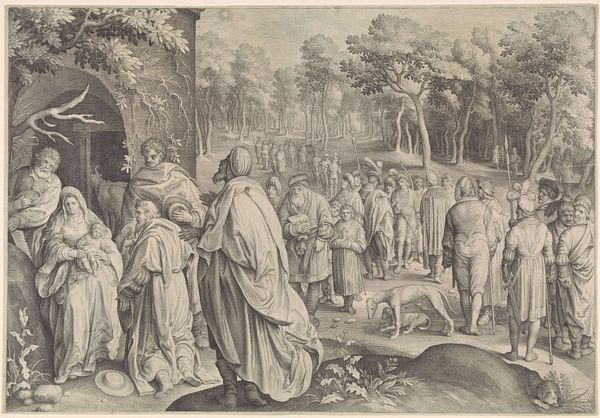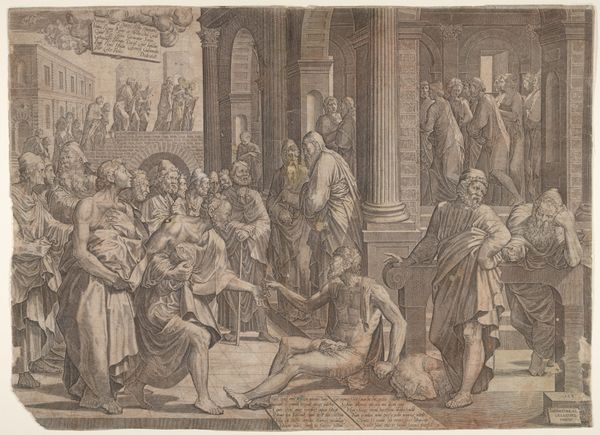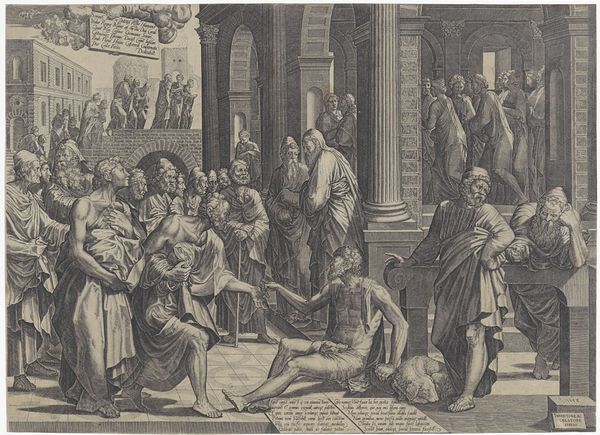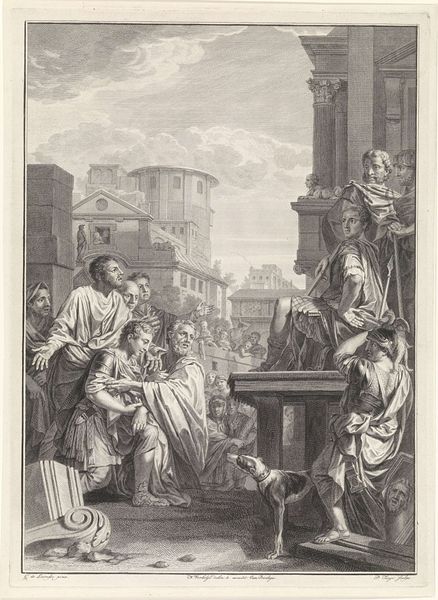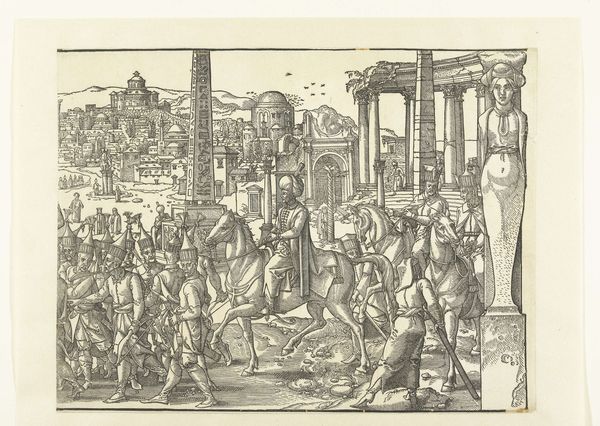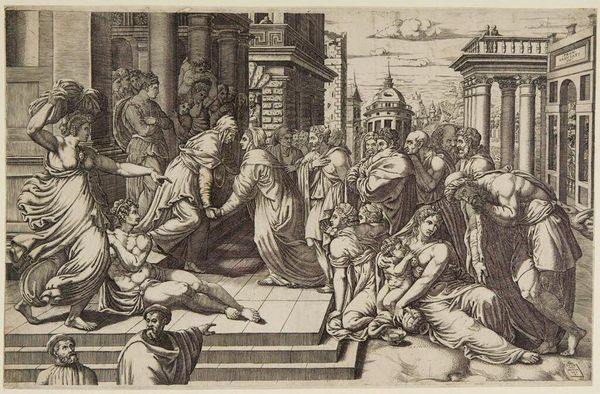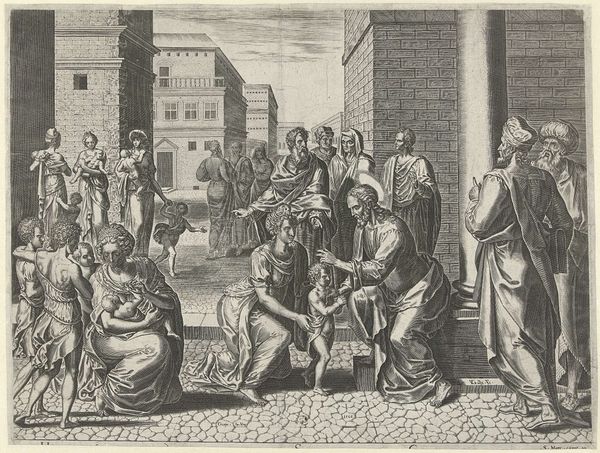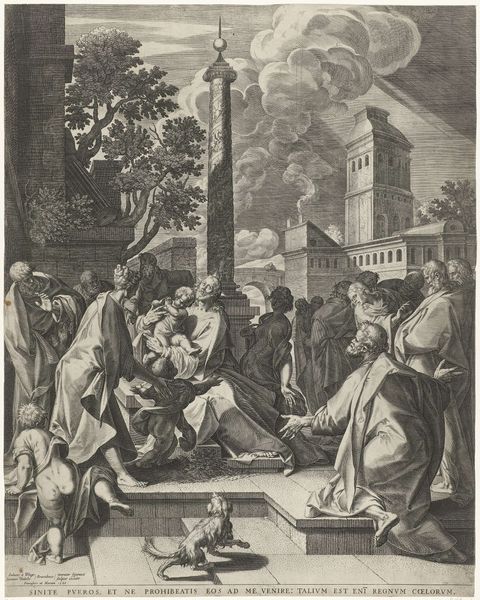
print, engraving
#
medieval
# print
#
landscape
#
figuration
#
history-painting
#
engraving
Dimensions: width 691 mm, height 436 mm
Copyright: Rijks Museum: Open Domain
Curator: What an expansive print. Here we have Nicolaes de Bruyn’s “Adoration of the Magi," made in 1608. The piece is an engraving, currently held in the Rijksmuseum. Editor: It strikes me as quite austere. The grey scale flattens everything, focusing my eye on the sheer number of figures. It’s almost overwhelming, a vast landscape filled with faces. Curator: Consider that this wasn't necessarily intended as a standalone object. De Bruyn was a printmaker, reproducing designs from other artists like Peter Paul Rubens. Prints like these circulated widely, impacting artistic trends across Europe and serving as a crucial mode of information and, dare I say, propaganda dissemination. Editor: So, the choice of a familiar subject – the Adoration – becomes almost incidental? The point is the repeatable, distributable image itself, transforming a religious scene into a commodity, available to the emerging bourgeois class. Curator: Precisely. Note how the detail invested isn’t necessarily in, say, Mary’s face, but rather distributed across the landscape. Buildings are meticulously rendered, the clothing of the Magi displays different textures achieved through clever engraving. De Bruyn isn't simply reproducing a composition, but showcasing the technical capabilities and labor of printmaking itself. The matrix, and how it can be worked to achieve certain representational ends. Editor: And, looking at the composition, that technical skill serves to normalize a very specific social order. The towering architecture, the sheer mass of onlookers… the humble adoration is staged on a grand scale, reaffirming established power structures. What we perceive as "religious art" also reinforced particular social hierarchies. Curator: An astute point! De Bruyn's “Adoration” then is not merely an illustration of a biblical story, but a window into the means by which art was circulated and consumed. This reveals the political and economic networks sustaining artistic production, revealing who had access to imagery, and therefore to specific ideas of social structure. Editor: I agree completely. The piece initially seems so straightforward. Now, I realize I’m looking at how artistic processes were fundamental to early information economies and their supporting ideologies.
Comments
No comments
Be the first to comment and join the conversation on the ultimate creative platform.
